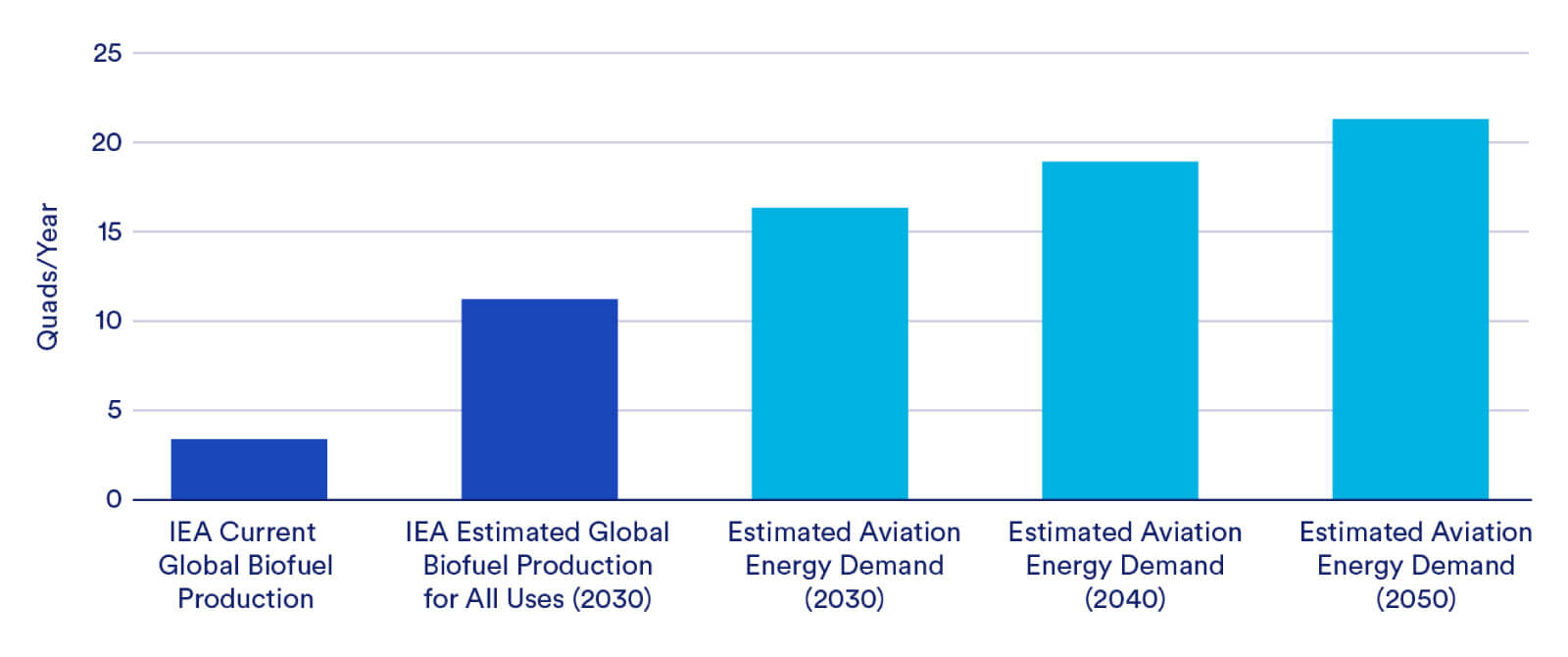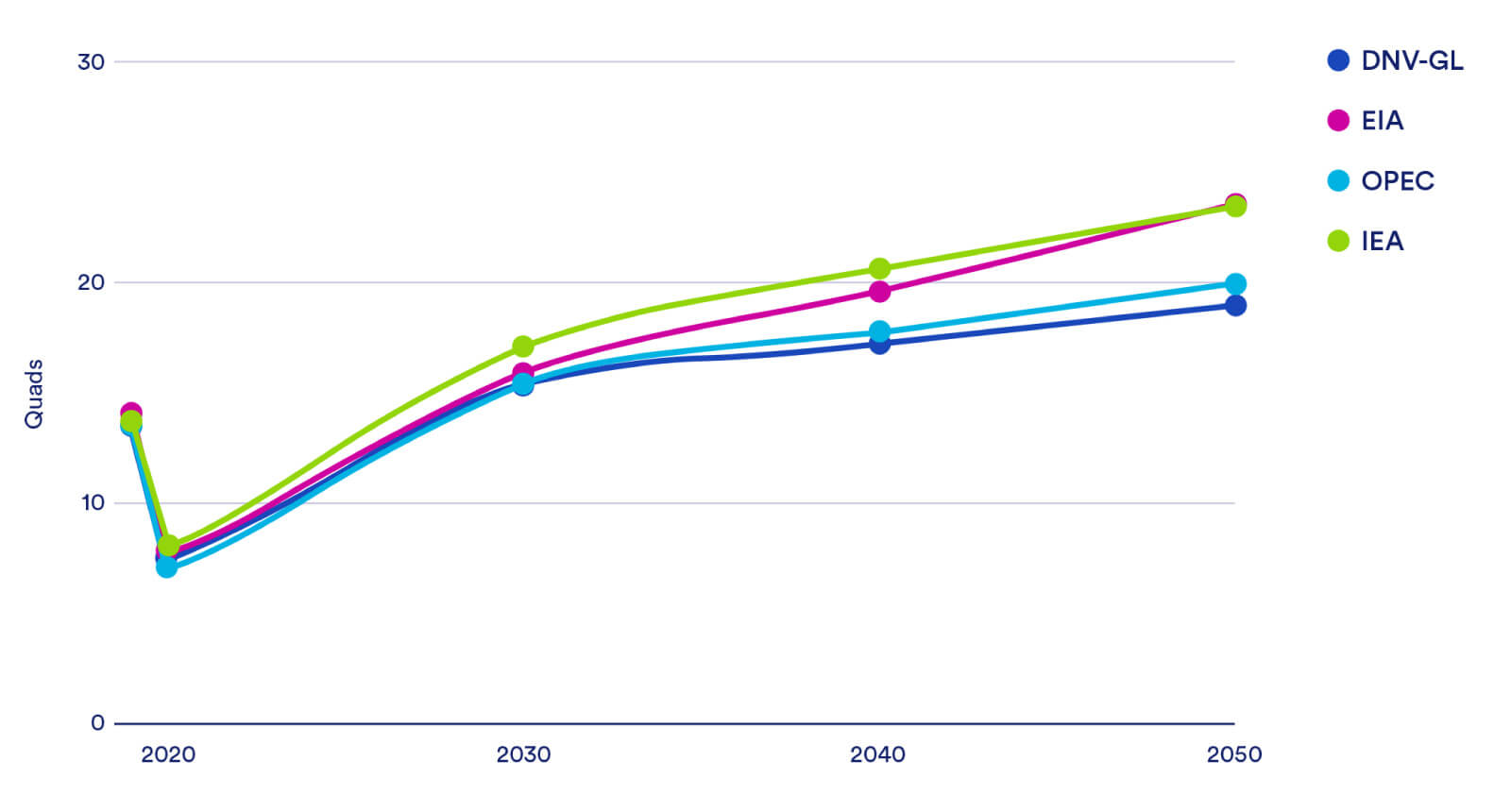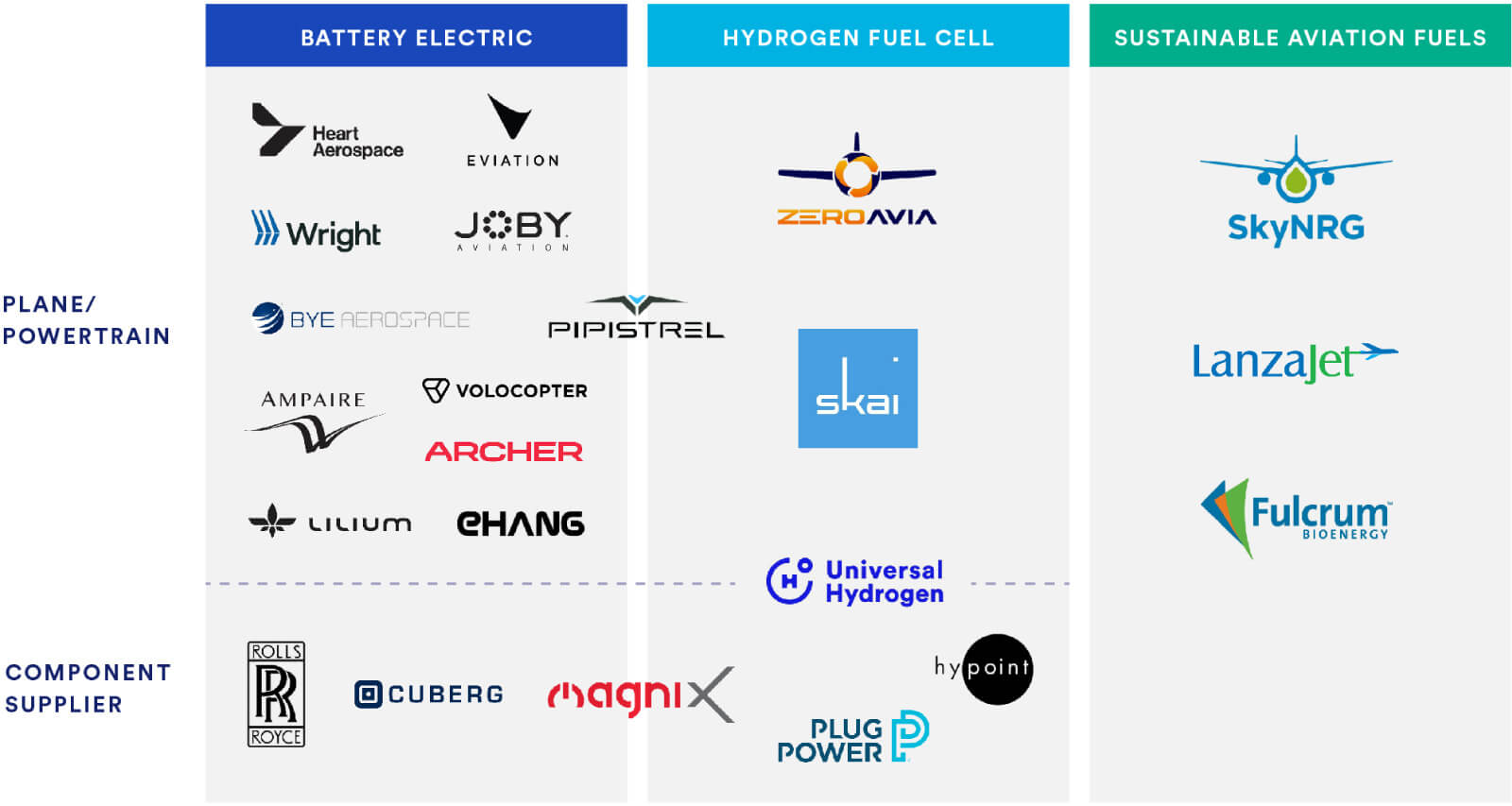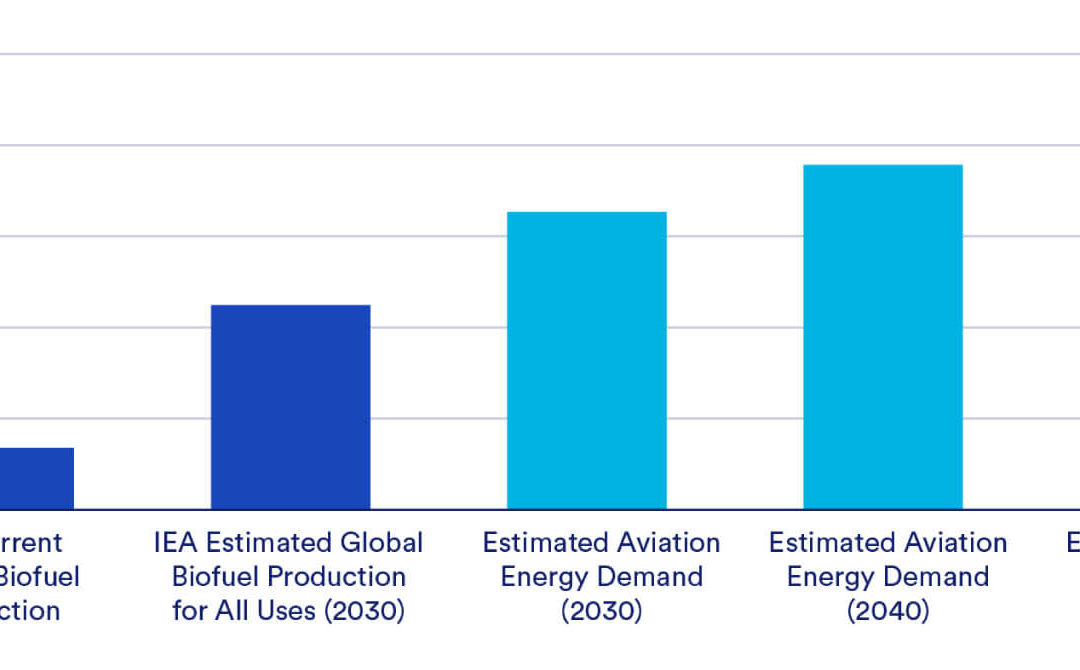If we’re going to decarbonize the global economy, we’ll have to decarbonize aviation.
The global aviation sector accounts for 2 percent of global CO2 emissions, and without significant changes, its emissions could triple by 2050 as air travel gets more popular. Commercial passenger transport accounted for 85 percent of greenhouse gas emissions in the last decade, with the remaining attributed to cargo and dedicated freight.
And it won’t be easy.
We have so far turned to biofuels — often dubiously deemed “sustainable aviation fuels” (SAF) to reduce aviation’s greenhouse gas footprint despite the fact that large-scale biofuel production drives up demand for commodity crops and motivates farmers to convert natural land into farmland, a process that transfers soil- and plant-carbon into the atmosphere.
A new CATF analysis, conducted and co-authored by Na’im Merchant, that examines the potential roles for biofuels and scalable zero-emissions fuels such as hydrogen to reduce aviation emissions found that the full supply of biofuels — all of which we assumed to be climate-beneficial, for the sake of argument — would still not amount to enough to address the growing demand for aviation energy, even if all projected biofuels production was directed to the aviation sector. In fact, the U.S. would have to more than double its biofuel production just to meet domestic aviation energy demand, despite being the global leader in biofuel production.
Global Biofuel Production vs. Global Aviation Energy Demand

It’s simple, we need more options.
If we’re going to decarbonize aviation, we’re likely to need biofuels that are demonstrably climate-beneficial, low-emission hydrogen, synthetic fuels, and maybe some electric propulsion to meet the demand while staying on track to meet our climate goals. Pursuing multiple options at once reduces the pressure on any one solution to meet demand, and hedges against unforeseen developments that could hinder the advancement of any given solution. To pursue this expanded suite of options to decarbonize aviation, governments must develop a coherent policy response that includes:
- Investment in research, development, and deployment of next generation fuels
- Tax credits or subsidies to incentivize investment and production
- Regulations to accelerate demand
- Technical standards — including full life-cycle accounting of the greenhouse gas (GHG) emissions tied to the production, transport, and use of aviation fuels
Shifting away from ‘sustainable aviation fuels’ and embracing low- and zero-carbon alternatives
Despite what the term suggests, not all fuels called SAF are sustainable. While it’s applied to fuels made from waste matter and other environmentally sustainable feedstocks, the term is also applied to fuels that are carbon-intensive or produced from non-biogenic feedstocks that require high amounts of energy, land and water.
The term also typically excludes other promising but not yet commercialized energy carriers such as hydrogen and battery electric propulsion. Even though sustainable aviation fuels are most frequently considered the best solution to reducing greenhouse gas emissions in the aviation sector, the term itself is ill-defined, inconsistently used and therefore can be misleading when assessing alternatives to kerosene jet fuel.
Global Aviation Energy Demand

Promising alternatives to aviation biofuels
While aviation biofuels are still projected to play a large role in aviation decarbonization, alternatives may be more effective, including scalable zero-emission fuels (SZEFs) — a category of fuels that includes zero-carbon fuels (ZCF) such as hydrogen and low-net emissions fuels such as synthetic kerosene.
Synthetic kerosene and other scalable zero-emission fuels that contain carbon need to achieve near net-zero emissions through carbon capture so there is no (or very low) net increase to carbon emissions in the atmosphere. Electrification may also be an alternative for some parts of the aviation sector. Many of these energy options are at the early stages in development and provide challenges and opportunities that should be considered as a part of the strategy to decarbonize aviation.
- Synthetic fuels made using CO2 and hydrogen as feedstocks
- Electrification of aviation fleets to eliminate CO2 emission and contrails and provide other environmental and economic benefits
- Hydrogen fuel produced with minimal GHG emissions
- Efficiencies and behavior change to reduce fuel consumption and decrease passenger demand
- Carbon removal through DAC with carbon storage to offset emissions from conventional jet fuel
Companies Developing Alternative Technologies to Aviation Biofuels

Governments must create an environment ripe for technological innovation to decarbonize aviation
Decarbonizing the aviation sector will take a global transition, as aviation biofuel availability falls well short of the sector’s growing demand for energy. Comprehensive policies and innovative and diverse technologies are critical to achieving net-zero emissions by 2050.
- In the U.S., policymakers are determining how to best decarbonize aviation and policies are in place, including the recently passed Inflation Reduction Act, that intend to benefit sustainable aviation fuels. But more comprehensive and aligned policies are needed to develop scalable zero-emissions fuels and electric propulsion technologies and their necessary infrastructure.
- Improve the environmental performance of low-carbon biofuels and prioritize the available low-net-emissions biofuels for aviation, as it’s likely the sector with the fewest decarbonization alternatives
In the European Union, the European Commission has used mechanisms to address aviation greenhouse gas emissions, such as including aviation in the EU Emissions Trading System, creating the Single European Sky regulatory framework, and collaborating with the private sector under the Clean Sky Joint Undertaking. And while the EU has taken a significant leap through the ReFuelEU Aviation proposal, it needs to address the increased energy demand and supply chain constraints. Complementary to the proposal, the EU should:
- Address potential supply chain and cost restraints associated with low-carbon aviation biofuels and SZEFs
- Invest in alternative low-carbon aviation fuels
Decarbonizing the aviation sector will require an ambitious, cohesive and inclusive global strategy. We need major investments in technology innovation and significant policy support to develop and deploy the diversity of scalable zero-emission fuels required to decarbonize the global aviation sector while meeting its growing energy demand.
Read the full report here for the full analysis, a review of existing policies and specific policy recommendations for both the U.S. and EU to support decarbonization.
If you’d like to read the original source of this article please click here Visit Source

